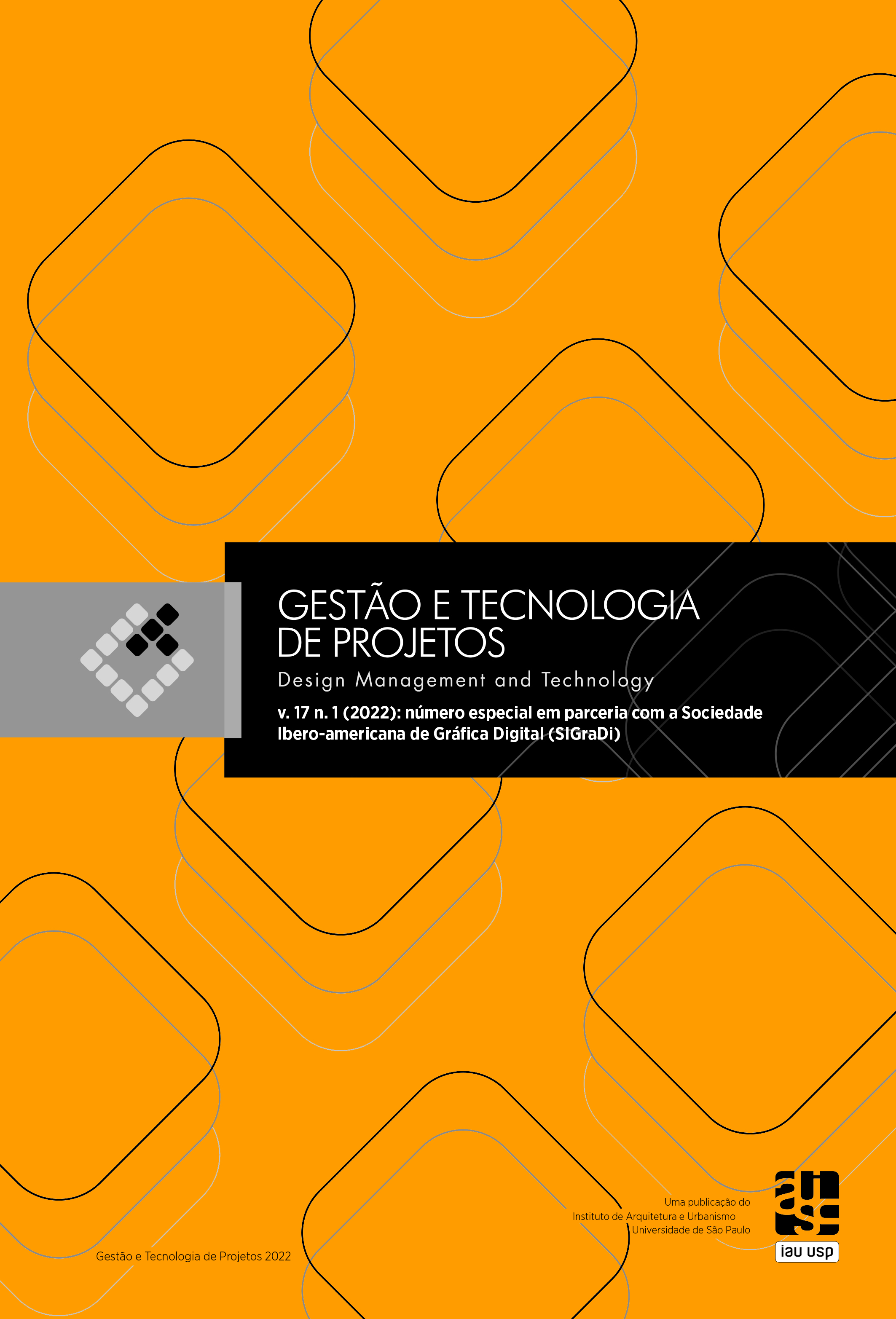Methodological artifact of the City Pattern: parametric computational translation of Christopher Alexander's principles on urban form and life
DOI:
https://doi.org/10.11606/gtp.v17i1.183534Keywords:
Urban design, Parametric modeling, Methodology, Computational design, Christopher AlexanderAbstract
Computational design, specifically parametric modeling, has played an important role in reaching complex forms, optimizations and automations of design processes. In addition to using parametric technology as a tool to generate form, this article aims to discuss the potential of computational programming as a connection between theory and design activity. To illustrate that, this paper will present the methodology developed used to translate the work of the architect Christopher Alexander as a basis for the development of decision-making instruments that deal with the complexity between form and urban life. The paper will present the problem, the DSR method as an important reference, the application of the methodology for translating Alexander’s patterns and finally the generic format of the steps, applicable for translation from other theoretical bases.
Downloads
References
ALEXANDER, Christopher, et al. A Pattern Language: towns, buildings, construction. Oxford university press, 1977. ISBN-13 : 978-0195019193
ALEXANDER, Christopher. The timeless way of building. New York: Oxford University Press, 1979. ISBN-13 : 978-0195024029
BAYAZIT, Nigan. Investigating design: A review of forty years of design research. Design issues, v. 20, n. 1, p. 16-29, 2004. DOI: 10.1162/074793604772933739
BATTY, Michael; LONGLEY, P. A. The fractal city. Architectural Design, v. 67, p. 74-83, 1997.
BEIRÃO, José. CItyMaker: Designing grammars for urban design. TU Delft, 2012. ISBN 978-1479355020
BERGHAUSER PONT, Meta Yolanda; HAUPT, Per André. Space, density and urban form. 2009. ISBN 978-90-5269-375-0
CANTAMESSA, Marco. An empirical perspective upon design research. Journal Engineering Design, v. 14, n. 1, p. 1-15, 2003.C http://dx.doi.org/10.1080/0954482031000078126
CELANI, Maria Gabriela Caffarena. Beyond analysis and representation in CAD: a new computational approach to design education. 2002.
CHAILLOU, S.. AI + Architecture towards a new approach. Tese de doutorado. Harvard University Graduate School of Design, Estados Unidos. 2019
DAWES, Michael J.; OSTWALD, Michael J. Christopher Alexander’s A Pattern Language: analysing, mapping and classifying the critical response. City, Territory and Architecture, v. 4, n. 1, p. 1-14, 2017. DOI: 10.1186/s40410-017-0073-1
HUBKA, Vladimir; EDER, W. Ernst. Design Science. London: Springer-Verlag, 1996. DOI: 10.1007/978-1-4471-3091-8_11
JÄRVINEN, Pertti. Action research is similar to design science. Quality & Quantity, v. 41, n.1, p. 37-54, 2007. DOI: 10.1007/s11135-005-5427-1
KUO, Jeannette; ZAUSINGER, Dominik. Scale and Complexity: Multi-layered, multi-scalar agent networks in time-based urban design. 2010. / ISBN 978-0-9541183-9-6]
PEFFERS, Ken et al. A design science research methodology for information systems research. Journal of management information systems, v. 24, n. 3, p. 45-77, 2007.
ROSSI, Aldo. A arquitetura da cidade. São Paulo: Martins Fontes, 1995 [ed. orig. L’ Architettura Della Città, 1966].
TERZIDIS, K. (2006). Algorithmic Architecture. Oxford: Architectural Press. DOI: 10.4324/9780080461298
VAN AKEN, Joan E. Management research based on the paradigm of the design sciences: the quest for field‐tested and grounded technological rules. Journal of management studies, v. 41, n. 2, p. 219-246, 2004. DOI: 10.1111/joms.2004.41.issue-2
WING, Jeannette M. Computational thinking and thinking about computing. Philosophical Transactions of the Royal Society A: Mathematical, Physical and Engineering Sciences, v. 366, n. 1881, p. 3717-3725, 2008. DOI: 10.1098/rsta.2008.0118
WING, Jeannette M. Computational thinking. Communications of the ACM, v. 49, n. 3, p. 33-35, 2006. DOI: 10.1145/1118178.1118215
Downloads
Published
Issue
Section
License
Copyright (c) 2021 Isabella Eloy Cavalcanti, Leticia Teixeira Mendes, Mauro Normando Macêdo Barros Filho

This work is licensed under a Creative Commons Attribution-NonCommercial-NoDerivatives 4.0 International License.
Copyright Notice
Authors who publish in this journal agree to the following terms:
- Authors retain the copyright and grant the journal the right of first publication, with the article simultaneously licensed under the Creative Commons Attribution License BY NC ND, which allows the sharing of article with acknowledgment of authorship and initial publication in this journal.
- Authors are authorized to take additional contracts separately, for non-exclusive distribution of version of the article published in this journal (e.g. publish in institutional repository or as a book chapter), with acknowledgment of authorship and initial publication in this journal.
- Authors are allowed and encouraged to publish and distribute their research work online (e.g. in institutional repositories or on their personal page) at any point before or during the editorial process, as this can generate productive changes, as well as increase the impact and the citation of published article (See O Efeito do Acesso Livre).



